AKM vs. AK-47: What’s the Difference?
June 20th, 2023
7 minute read
The Soviet-designed AK-platform changed the modern battlefield by putting a relatively lightweight, select-fire assault rifle in the hands of the infantry soldier. However, what most people identify as an AK-47 is usually an AKM. Do you know the difference between the AKM and the AK-47?
In 2019, Beto O’Rourke, perennial political candidate and full-time professional aging hipster, stood on the stage at the Democratic presidential primary debate and said, “Hell yes, we’re going to take your AR-15, your AK-47.”
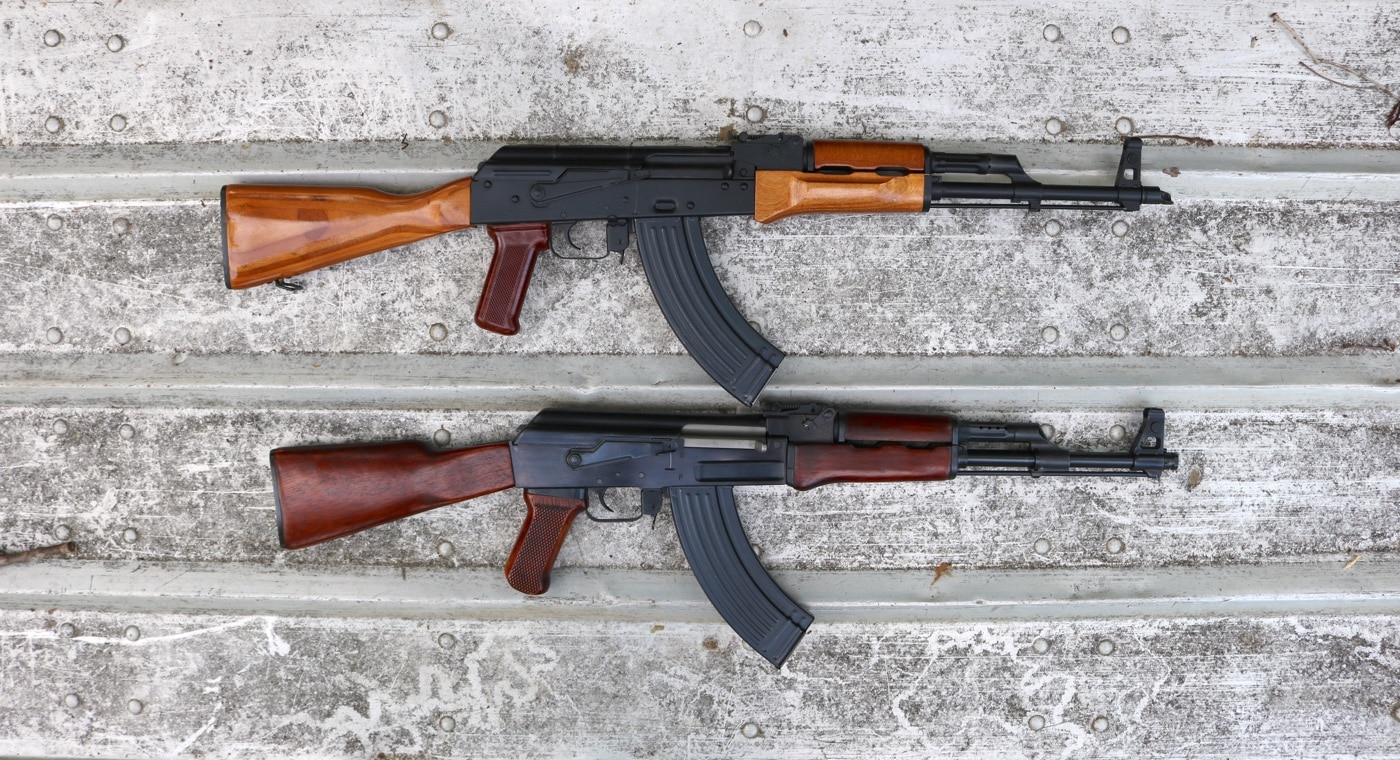
Ah, Beto, bless his heart. As a young man, Mr. O’Rourke posted regularly on the hacktivist website Cult of the Dead Cow. His nom de guerre at the time was The Psychedelic Warlord. With a background like that, we might expect him to get a few details wrong.

Beto would face some unique challenges in trying to take Americans’ AK-47s. There are admittedly at least 20 million AR-15s in circulation in America. By contrast, there aren’t likely more than a dozen or so true AK-47s, and I doubt any of those are in private hands. In the world of gun control, semantics are everything. Well-intentioned gun folk on our side are not much better. Actual AK-47s are actually vanishingly rare on this side of the pond. What most people mean when they say AK-47 is AKM. That’s the etymological issue we will dissect today.

And let’s also get one other point out of the way here on the front end. While we are talking about the true select-fire AK-47 and AKM assault rifles in this piece, these are full-automatic-capable firearms heavily restricted from civilian ownership. The “AK” rifles and AR-15 rifles we as civilians can purchase are purely semi-automatic, meaning they only fire a single round per pull of the trigger.
AK-47 Origin Story
Mikhail Timofeyevich Kalashnikov was born a peasant, the 17th of 19 children. Though he never advanced past 7th grade, Kalashnikov fancied himself a poet and published several books on it. Unfortunately, Mikhail’s dad ran afoul of Stalin somehow, so most of his childhood was spent in exile in Siberia. Such was life in the Soviet Union.
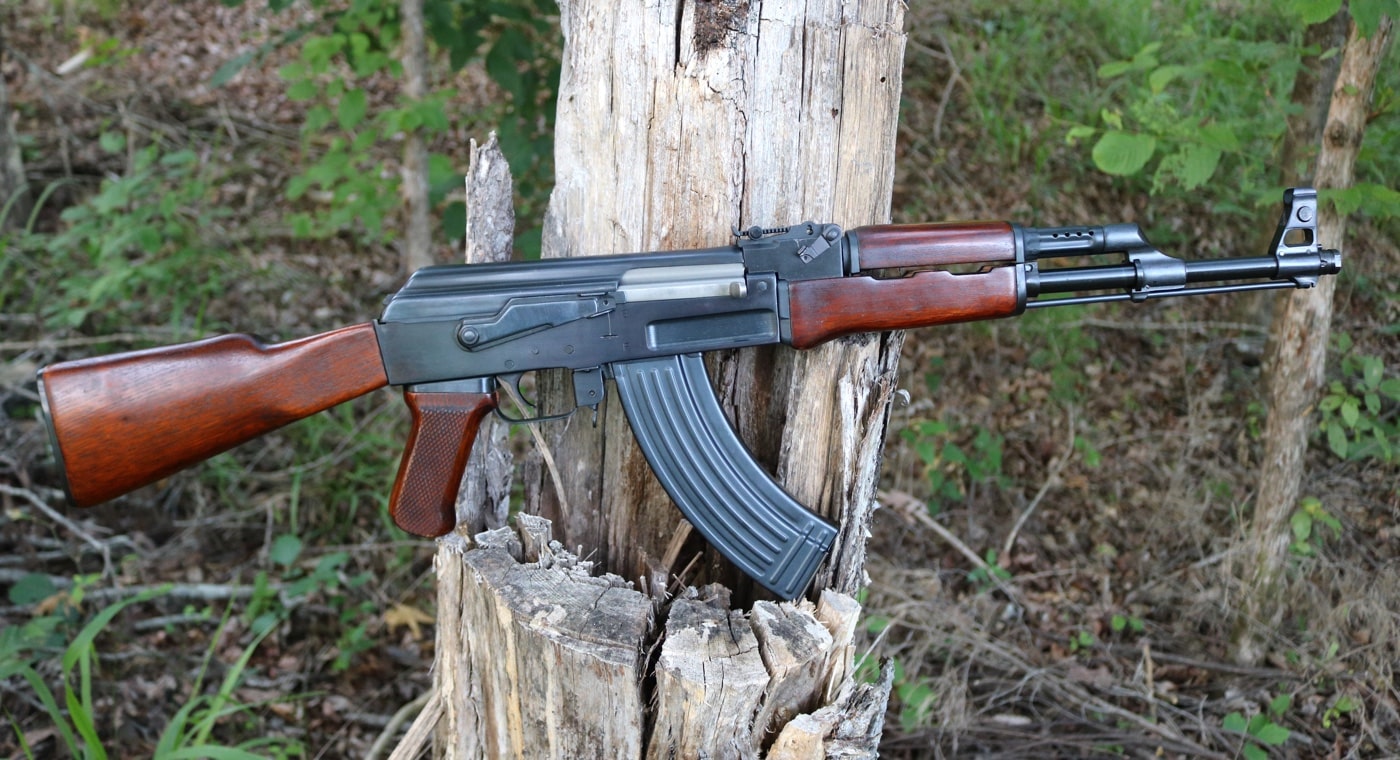
During WWII, Mikhail Kalashnikov was a T-34 tank commander in the Soviet military. After being wounded in the shoulder during the Battle of Bryansk, he was remanded to a field hospital. It was here that he claimed to have had his initial inspiration for the remarkable rifle that would bear his name.
Of his enlightenment, Kalashnikov said, “I was in the hospital, and a soldier in the bed beside me asked: ‘Why do our soldiers have only one rifle for two or three of our men, when the Germans have automatics?’ So, I designed one. I was a soldier, and I created a machine gun for a soldier. It was called an Avtomat Kalashnikova, the automatic weapon of Kalashnikov — AK — and it carried the year of its first manufacture, 1947.”
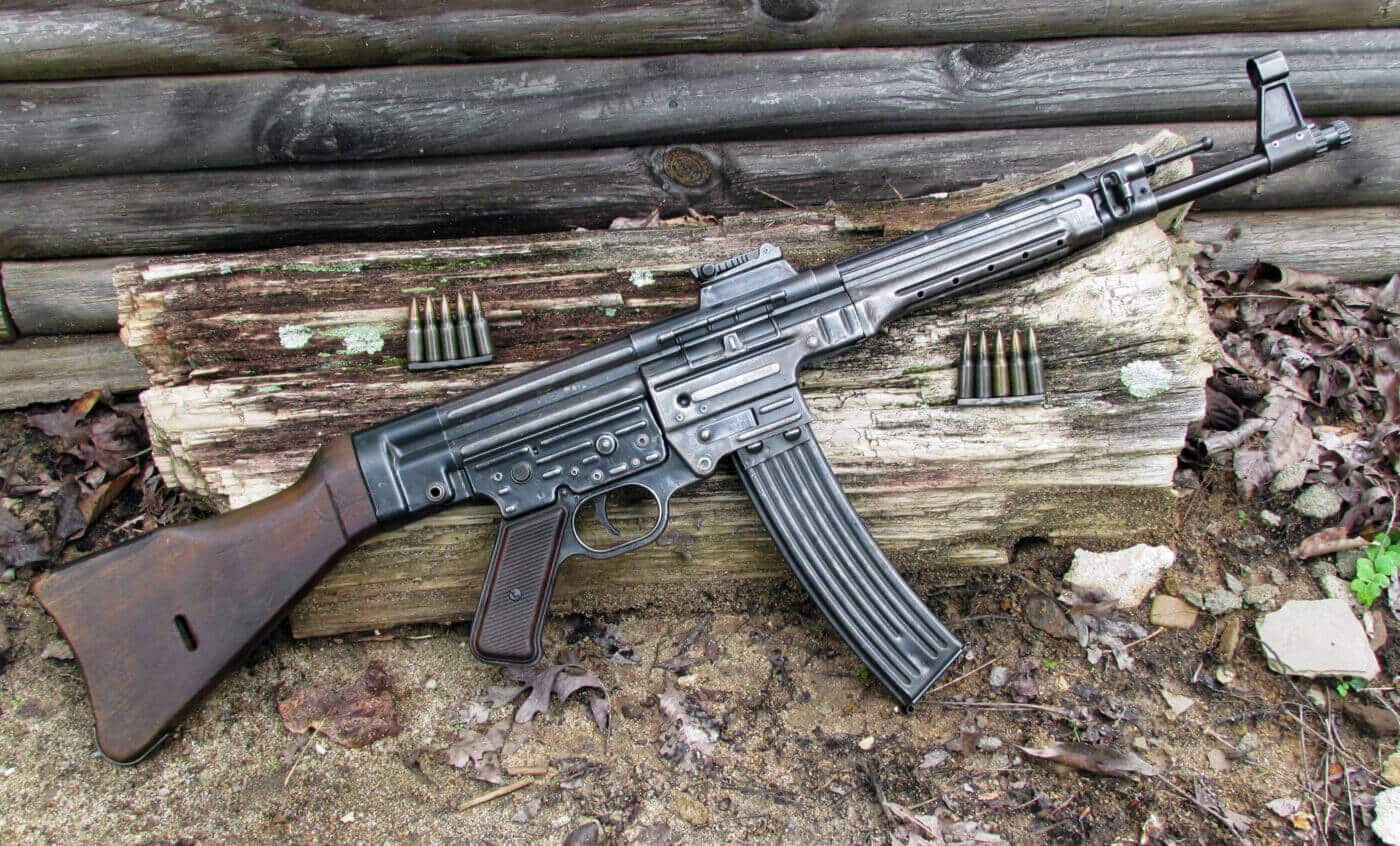
Kalashnikov himself admitted that he set out to incorporate the best attributes of both the American M1 Garand and the German StG44 assault rifle into a single groundbreaking hybrid design. His first rifle prototypes were completed in the fall of 1947 and underwent troop trials in early 1948. This weapon was formally adopted in 1949 as the AK-47.
Those early AK-47 rifles were built around a stamped steel receiver. However, difficulties with quality control, particularly as regards the welding of the guide rails, made mass production a proper headache. As a result, Comrade Kalashnikov went back to the drawing board and developed a milled receiver version that was lyrically reliable. Production of these weapons began in 1951.
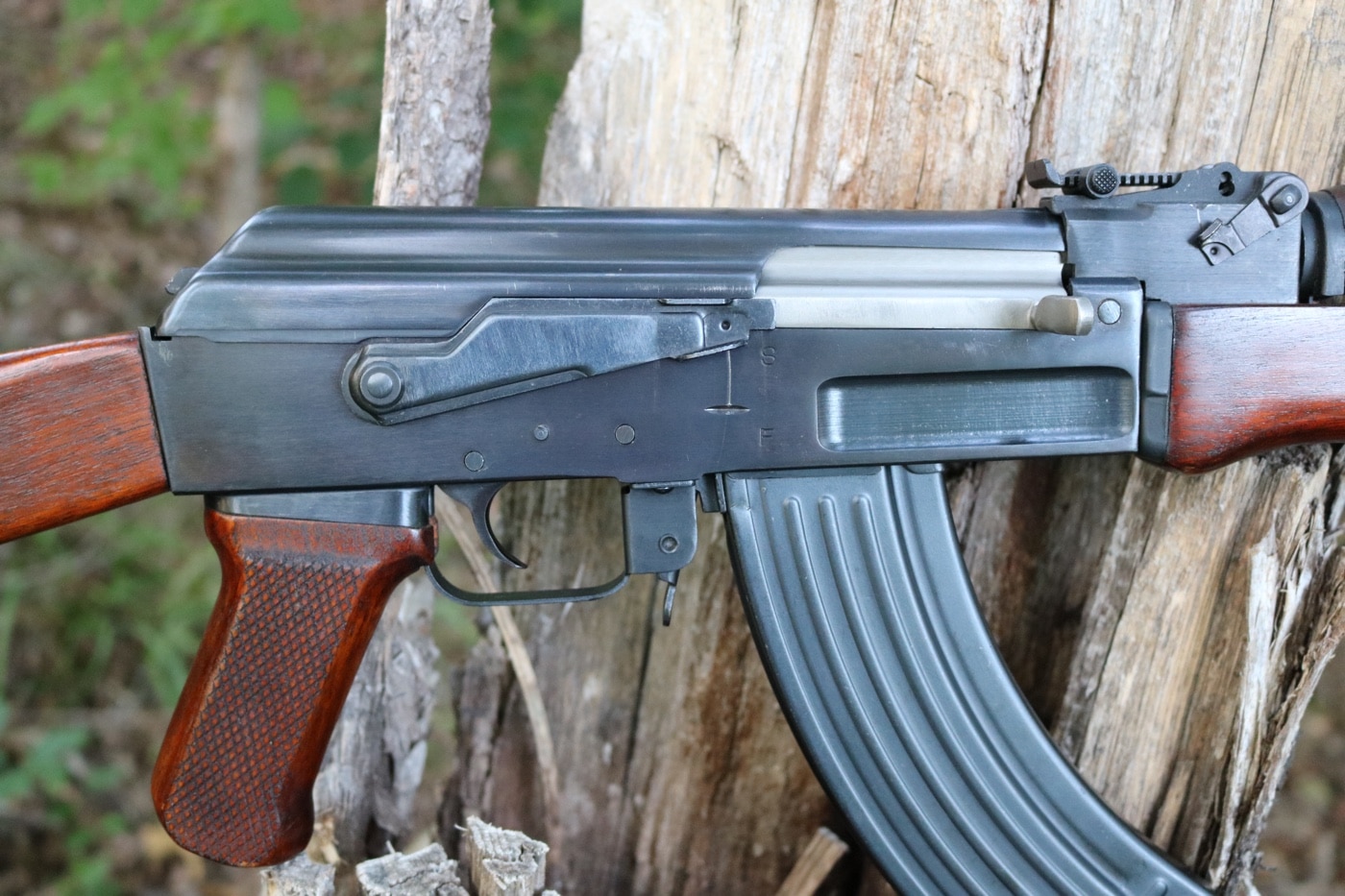
Milled receivers had never been Kalashnikov’s plan, so in the late 1950’s the Soviets introduced the stamped receiver — essentially sheet metal — Avtomat Kalashnikova Modernizirovanniy or AKM. For many people, this change is the main difference between the rifles. AKM rifles were much easier to produce, yet remained just as reliable as the previous weapon and were much lighter.
This is the modernized version that found its way around the world. With well over 100 million copies in service, the AKM is one of the most influential mechanical devices in all of human history. This brings us back to Beto O’Rourke.
Semantics
To the purist, the AK47 was only in production for about two years, and few if any of these early guns ever made it into the U.S.. Those that might are likely in government collections someplace. Over time, however, collectors and historians developed their own classification system for Kalashnikov rifle variants independent of the official Soviet bureaucracy. According to this somewhat artificial lexicon, AK rifles fall into four broad categories. Each category could be had with either fixed or under-folding stocks.

The Type I was the original stamped receiver version introduced in 1949. The Type 2 receiver was cut from a massive steel forging. The production run for the Type 2 spanned between 1951 and 1957. The Type 3 was introduced in 1955 and differed slightly from the previous version in the angle of the lightening cuts on the sides of the receiver. This was the most common milled receiver AK. The later AKM hit the streets in 1959 and orbited around the now-perfected 1mm stamped steel receiver.
AK rifles have since been produced around the globe in a bewildering array of sub-variants. Some of the most common early examples in the U.S. came from China before importation fell to various executive orders. Egyptian models were also available. The Legend series from the Chinese Polytech company is the best approximation of that early Type 3 forged receiver AK to be found within our shores. For comparison, I chose a domestically produced clone, of which there are several superlative examples, to represent the AKM.
Technical Details
You can tell these two rifles apart immediately by studying the forward bit of the receiver underneath the ejection port. The forged receiver of the AK-47 has a long shallow groove milled in each side to cut down on weight. The stamped receiver of the AKM sports pressed-in dimples that help steady the magazine. Additionally, the top cover of the AK-47 (as manufactured in the Soviet Union) is typically smooth, where that of the AKM includes a series of stiffening ridges.
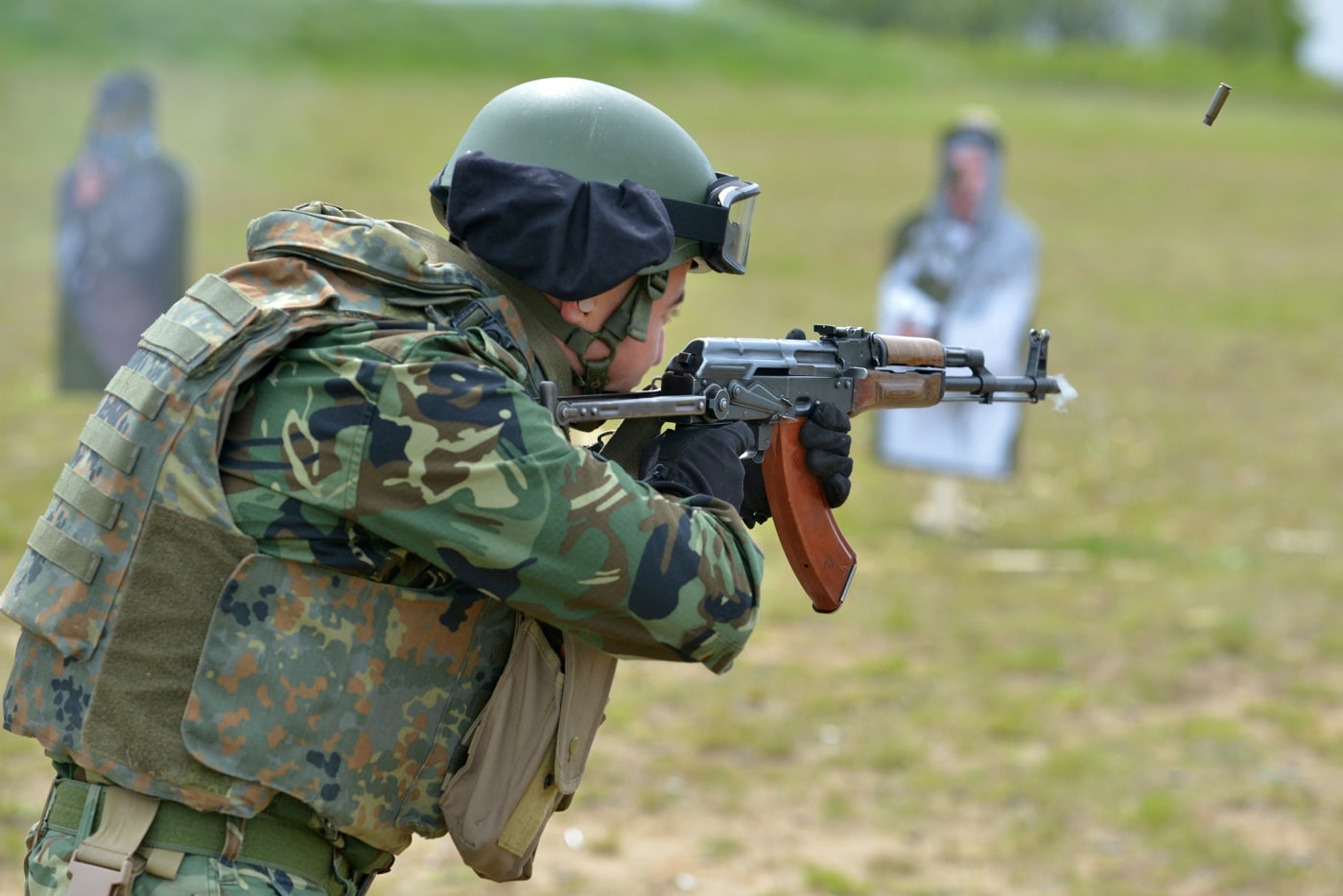
The buttstocks of the two guns mount via different geometries and are not interchangeable as a result. The AK-47 receiver has its sling swivel on the left side, while the AKM sling mounts to the heel of the stock. Both stocks include a compartment for a cleaning kit in the back. The AKM stocks are of laminated wood, also helping differentiate them.
The forearms are interchangeable but are of disparate design. The AK-47 handguard is flat on the sides, while the laminated AKM version features prominent palm swells. The original furniture on the Polytech Legend is cut from Chinese chiu wood.
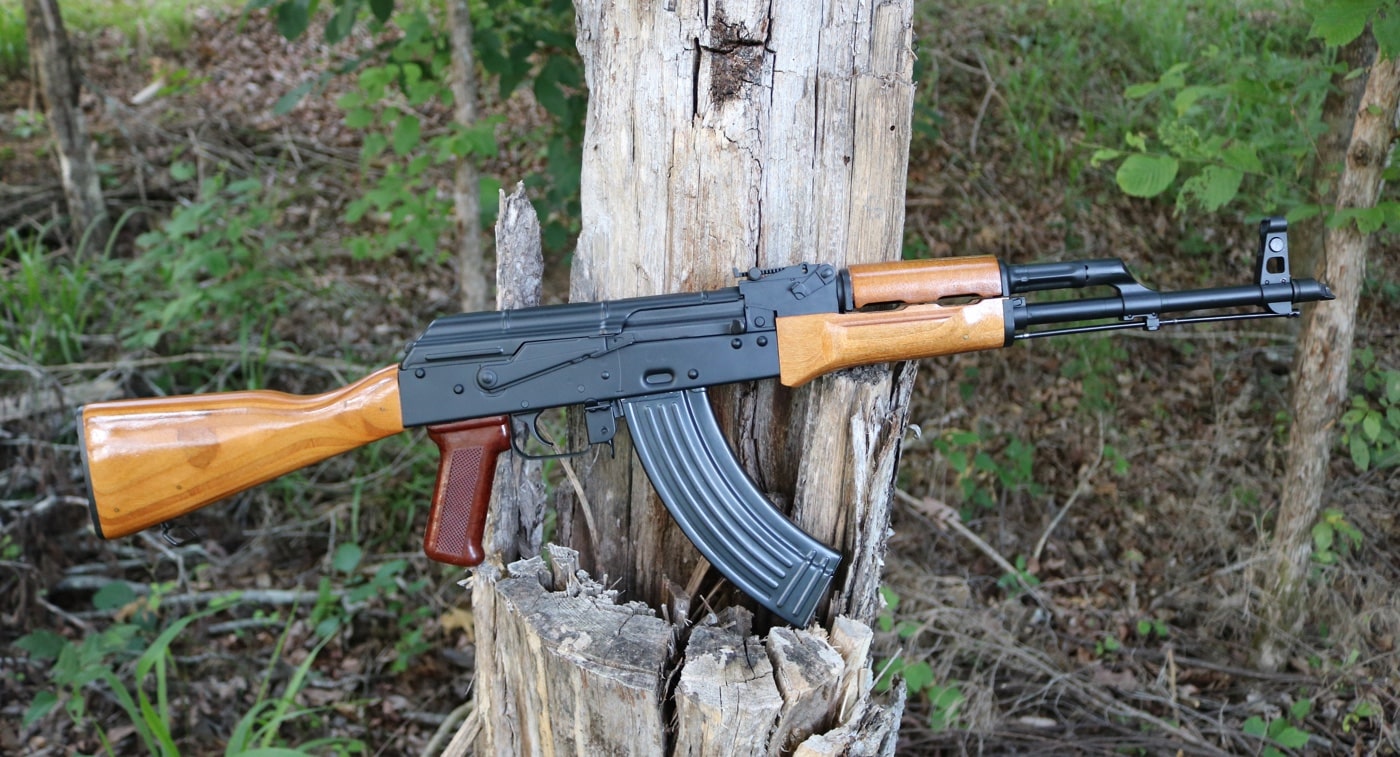
The muzzle nut on the AK47 is flat and unremarkable. The muzzle on the AKM is capped with a distinctive slanted muzzle brake that angles muzzle blast up and to the right to help counteract muzzle climb in full auto for a right-handed shooter. The front sight post is fully hooded on the Chicom gun and only partially thus on the later AKM rifle. Both rifles include a cleaning rod underneath the barrel.
The right-sided ranch gate safety is common between the two weapons, though the entrails of the AKM include a curious mechanism not found on the earlier gun. Most print sources refer to this as a rate reducer even though the cyclic rates are very similar between the two designs. I have read that this is more of an anti-bounce device to keep the fire control system in sync with the bolt during full-auto fire.
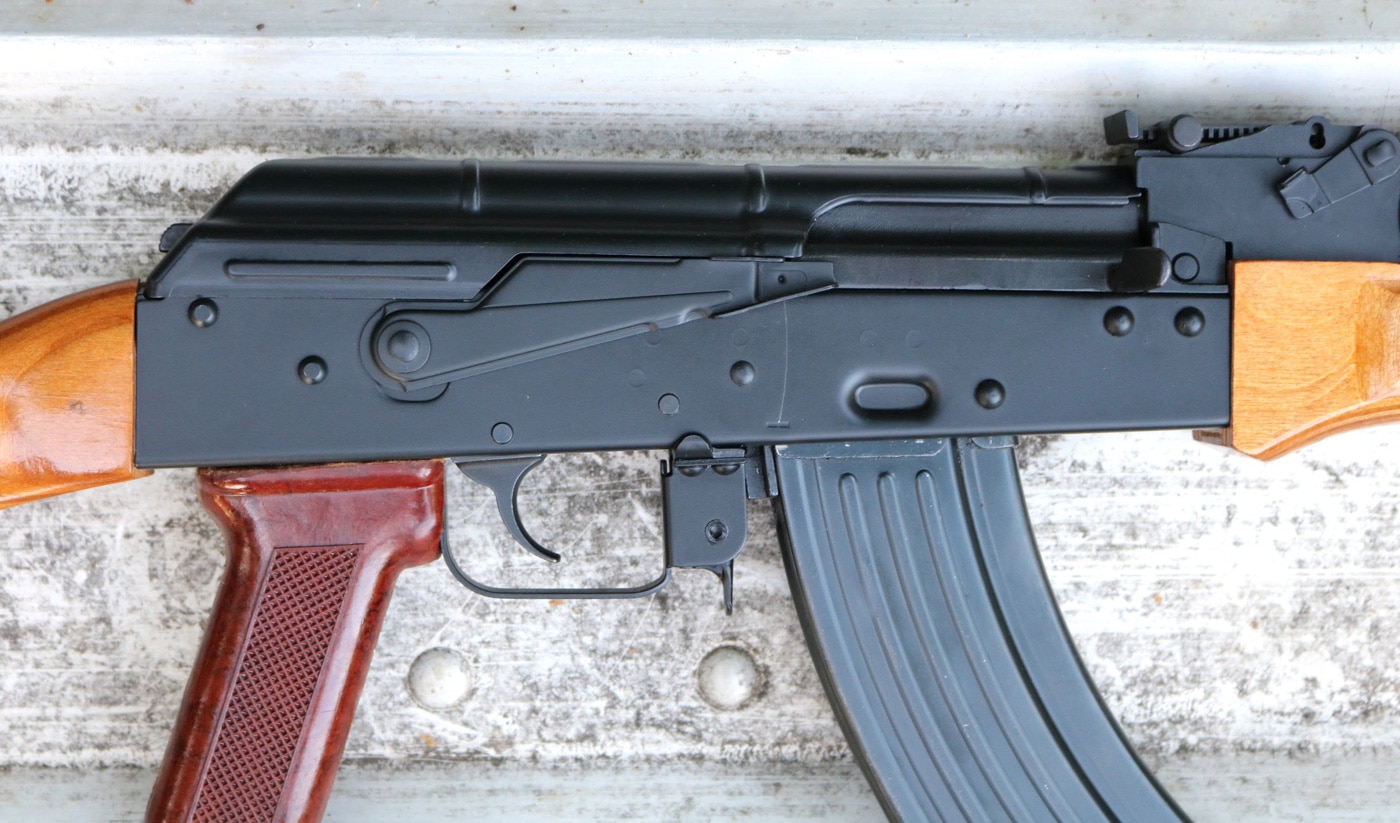
Both rifles are chambered for the 7.62x39mm cartridge. The cartridge features a rimless, bottlenecked case measuring 39mm long and a bullet diameter of 7.62mm. It is known for its reliability, ease of production, and effectiveness at short to medium ranges. It is a popular round, widely used worldwide in military, law enforcement, and civilian applications due to its versatility, low cost and widespread availability.
Denouement
AK rifles are ubiquitous around the world. In fact, the relative price of a full-auto AK in a particular location determines whether or not that place is a good place to live. If a selective-fire Kalashnikov costs as much as a nice car, then put down roots and settle down. If you can trade into a Soviet-issue AK with iron sights for a couple of healthy chickens and a date with your homeliest sister, then I think you should catch the first truck headed someplace else.
Beto O’Rourke clearly hasn’t a clue what a real AK-47 rifle is. Much of the minutiae surrounding firearms in America orbits around technical details that would confound all but the most dedicated purist. In the expansive lexicon that describes Comrade Kalashnikov’s remarkable rifle, we find a perfect example.
Editor’s Note: Please be sure to check out The Armory Life Forum, where you can comment about our daily articles, as well as just talk guns and gear. Click the “Go To Forum Thread” link below to jump in!
Join the Discussion
Continue Reading
Did you enjoy this article?

 190
190






